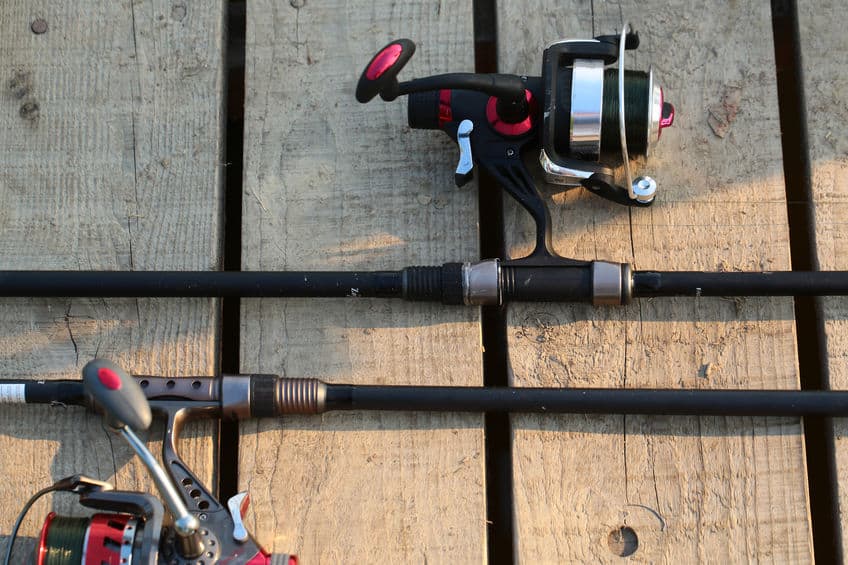
Braided line or Mono line; one of the newer arguments in the fishing community. Which is better, which has a higher success rate. Is it personal preference, or does braided line really deserve the title of ‘super-line?’
Which one is better? Each line has its strengths and its weaknesses. Braided line is stronger per diameter but has no stretch. Mono is nearly invisible and has a stretch which can be vital when trying to set the hook properly.
Like most things related to fishing, everything depends on a lot of little facts and what-ifs. We will run through some of those situations until you decide on what type of line works best for your situation.
Braided Line
The first line that we will be looking at is called braided line. It is called so because the line is actually three separate lines braided together, just as the name states. This allows the line to be much stronger by itself simply because it is not by itself anymore.
Braided lines lose the stretch that other fishing lines have because of this braid. This can be a good thing, but it can also hinder the fishing process.
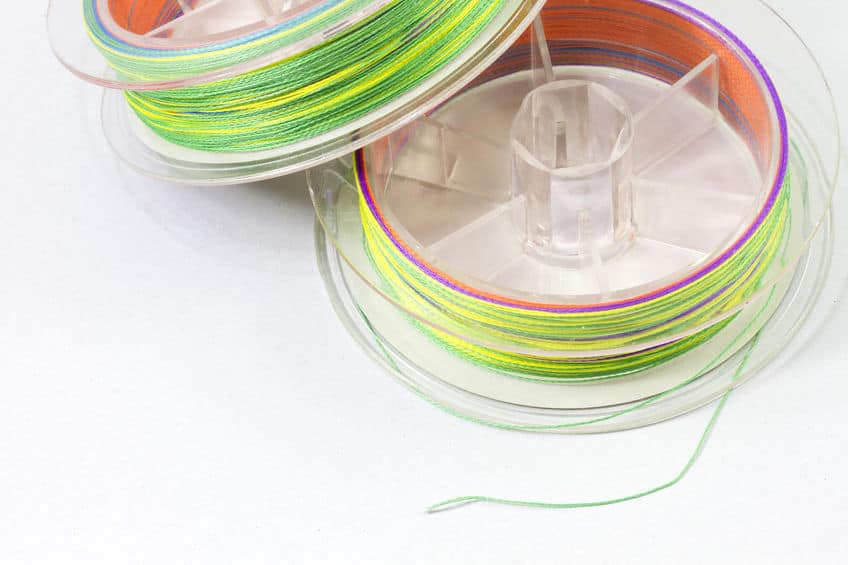
Advantages
Braided line is a fairly recent invention. It has been known for a long time that by braiding a string or rope together would make those three strings stronger than before.
This is because as stress is applied to the line from each side, the strings cut into each other. A side effect of this, however, is the reduction in
A lack of elasticity means a few things for this new kind of line. The sensitivity of the line is increased dramatically. The slightest touch from beneath the water can be noticed if your senses are tuned incorrectly.
This also means that you can have a greater control over your lures. The slightest flick of your rod will translate nearly directly to the lure.
Braided line also floats and has a slight natural buoyanc to it, making it a great choice when looking towards using topwater lures. This type of line will be able to stay higher in the water.
Braided lines also give a special advantage of being able to cast further out than other types of rods. The thin diameter allows an angler to be able to cast a lure further out.
As a rule of thumb, the thinner the diameter is of the line, the further it will cast. This is because there is less resistance in the air, as well as in the spool, whether its a baitcasting reel or a spinning reel.
Braided lines are able to have a very thin diameter, while still allowing a good weight limit, which brings us to the next advantage. The difference in a 10-lb line of braid is significantly thinner than a 10-lb line of monofilament line. This means longer casting distance, as well as more strength for the line.
Braided line also has little to no memory, meaning that keeping it wrapped up in the spool or on the reel for extended amounts of time won’t make it form into a curled mass of swirls, as mono does quite easily.
Disadvantages
As great as the ‘super-line’ is, it still has many disadvantages, most closely related to the things that are considered advantages in one part of fishing.
The lack of elasticity means a few different things, while it does increase the sensitivity of the rod, it also puts a lot of stress on the knots in between swivels or lures. The line won’t break, but there is always the chance that one of the knots could give out and let the fish get away with the hook.
The constant tension on the line also means that any sharp edge or rock will be a constant worry to the fisherman. A little abrasion between the edge on a submerged pillar and the line could easily break.
Another disadvantage is the cost of line compared to other lines. On average,
Braided line can put a lot of stress on the reel and rod that you use, sometimes causing early wear on your equipment. When tangled, braid can be nearly impossible to untangle and often will lead to the need to cut off yards at a time. Braid can also only be broked by something sharp, yet another downside to braid.
Locations
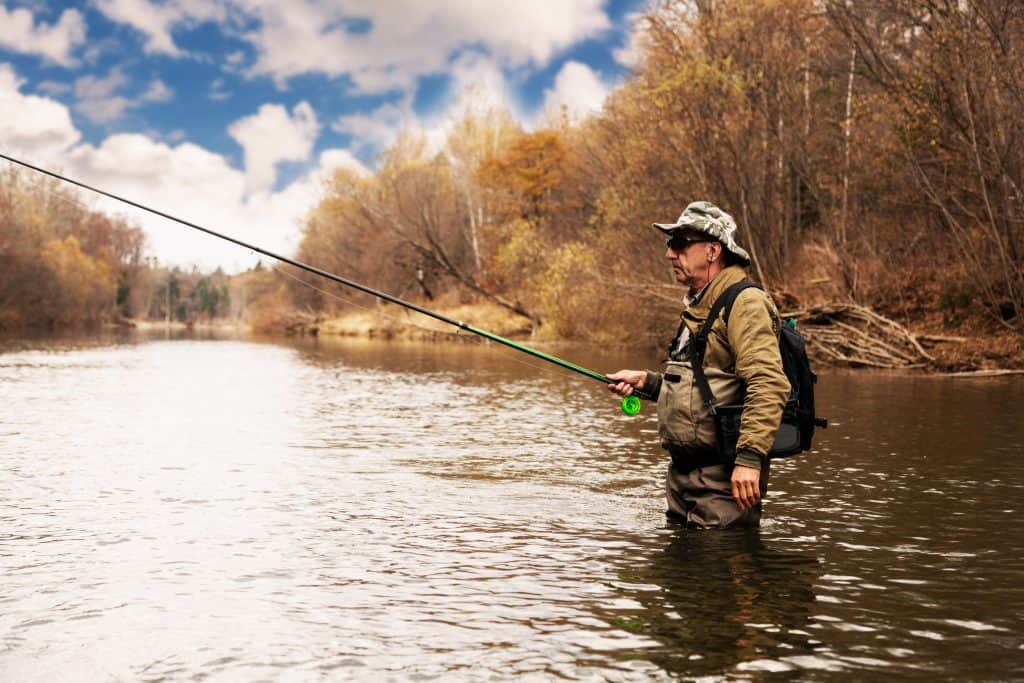
Ideal Locations – The ideal locations to use braid is in muddier waters, where the fish will be less likely to see it. The strength of braided lines also makes it the ideal line to use when fishing in an area with a lot of greens in the waters.
Snags are almost impossible to miss, so being able to pull on the line hard and not worry about the line breaks. The thin diameter also means that the line will be able to cut through the vegetation if the line were to get stuck.
Bad Locations – The places to not use line include clear waters. Usually, braided lines are colored, meaning that the fish will be able to see it a lot clearer than mono line.
Another bad place for braided line is around concrete structures or abandoned sunken buildings. If, while fighting a fish, your line gets too close to a sharp edge, the line could break and you could lose the fish and hook.
Types of Fishing
Braided line can be used in a lot of different types of fishing. Because of its sensitivity, there is a lot of potential for control over lures and different fake hooks.
| Spinner Lures | The increase in control and sensitivity will work great for the spinner lures. |
| Spoons | Increase in control and sensitivity will be able to tell you exactly when you should set the hook and keep thefish |
| Crankbaits | The sensitivity will help you know if you’re running the bottom or if there’s a fish biting. |
| Plastics | Will benefit from the control and sensitivity advantages |
| Topwater Lures | The natural buoyancy and control offered by the braided line make it the superior choice here as well. |
Monofilament Line
Monofilament line is, just as the name implies, one line of one type of material.
Mono has been used in the fishing community since the 30’s and has a massive track record that cannot be surpassed anytime soon. It’s been working for such a long time that it still has quite a firm grip in the braid vs. mono argument.
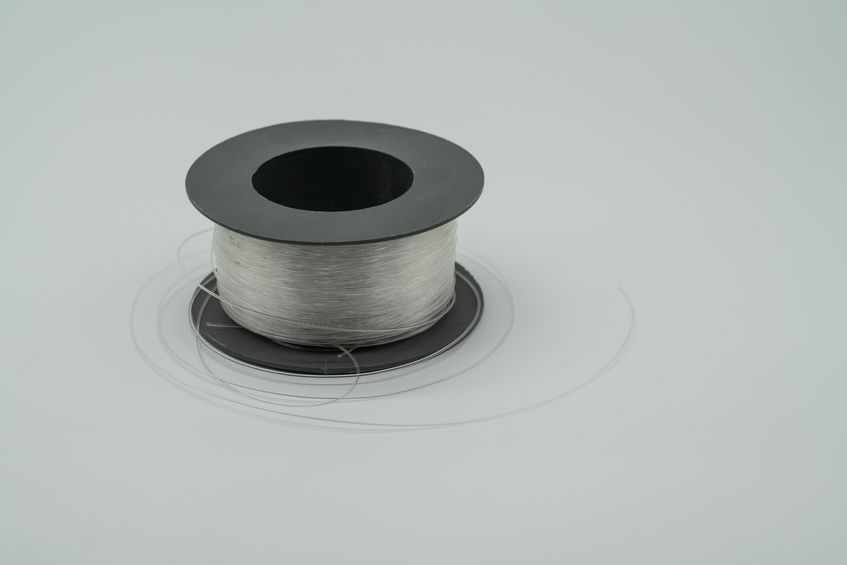
Advantages
Stretch – Monofilament lines are able to stress quite a bit. This is an advantage because if you set the hook a little too hard, instead of ripping it out of the fish’s mouth, it will stretch a little and set the hook the perfect amount.
Monofilament line is very forgiving, and that is a good thing for beginners, but can also help out anglers that know exactly what they’re doing.
Diameter – The thickness of mono line is usually used against it. It adds buoyancy, which can put a limit on how far your lure can drop, but this can still be an advantage to you. You don’t always want all of your lures to drop low as soon as you cast them out.
Some lures, especially PowerBait, can see it as an advantage if the hook descends slightly slower than usual. High diameter monofilament lines can do that.
Color – The color, or lack of, is probably one mono line’s greatest strengths. Most mono is clear or translucent. This makes it very hard for the fish to pick up on the line being in the water. They will only see the bait, and with fish like trout, that is an advantage.
There are a ton of different colors to choose from when looking at monofilament lines. There are some that are clearly visible from out of the water, but while inside the water, they are almost invisible to the fish.
Knots – Another massive advantage mono line has over other types of lines is that it is incredibly easy to tie knots with. At first, it was hard to see where the line was, but after I got used to it, I would be able to tie knots very quickly.
There is a slight resistance to bending, meaning the ends will be stiff enough the lead through the loops of the knots.
Inexpensive – Probably the most cited advantage of the argument, monofilament line, especially clear, is definitely cheaper by the foot than any other type of line. You can find
Disadvantages
Memory – In my experience with mono line, the most annoying thing is the curls in the line from an overnight stay reeled up tightly in-between uses. The curls are because of the high memory of monofilament lines.
They assume the shape of whatever they’re in for the longest amount of time, and once they’ve decided to pick a shape, it’s nearly impossible to change it back to straight.
These curls usually result in more snags, a delay in setting the hook (which can be deadly), and can sometimes even result in the birds nests anglers get every once in a while with fishing lines.
UV Rays – Monofilament lines all have a common weakness. Exposure to UV rays, or sunlight, can permanently damage the line, and often does. Replacing the line is a must at least every six months.
Absorbs water – Mono lines also have a habit of absorbing water. When they become saturated, they begin to change, and a change on how they work can throw off an angler.
This makes them a bad choice for fishing oceans, as the salt water will ruin the line quicker than freshwaters.
Locations
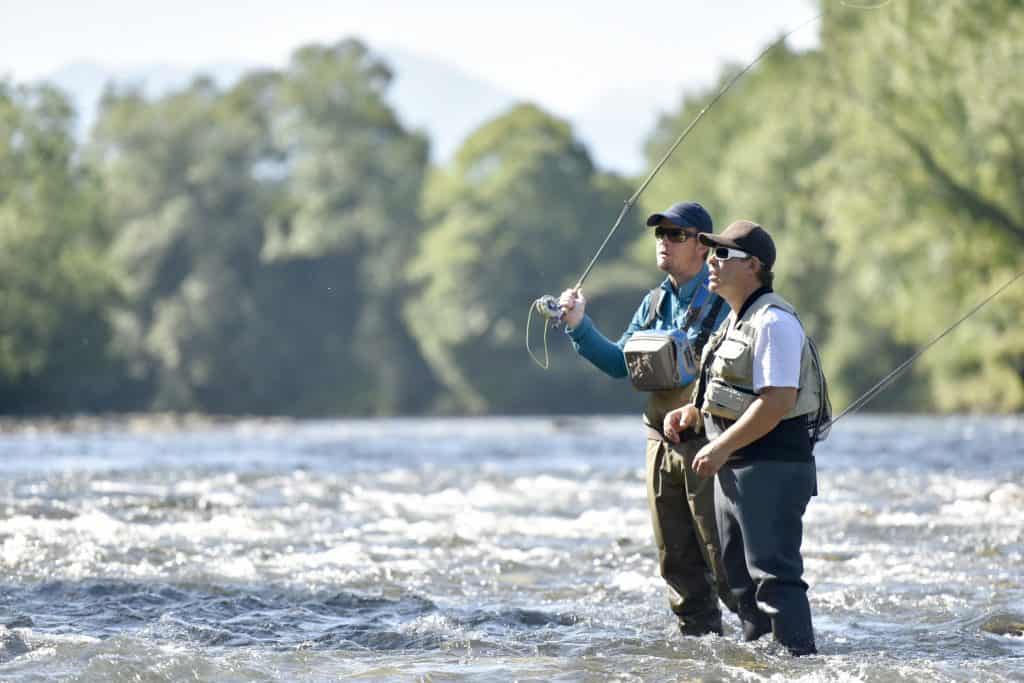
Mono is best used in clear waters. The reason for this is the color of the line. Because it is clear, the fish are less likely to notice it, and instead will focus on the lure.
Some fish are very picky about what is around or attatched to their food, so they will not bite if they see a braided line. The mono line is very hard to see, and they will be more likely to bite.
Another good place to fish with mono are places with a lot of structures and places to snag a line. Mono, because it is usually a bit thicker, has an advantage over sharp edges.
The larger diameter has a natural resistance to abrasion like that. It can safely rub up against rocks and submerged structures and not break or wear too quickly.
Any place where it is a concern that the fish might get spooked by seeing the line is a great place to use
Types of Fishing
Mono has a place that will forever be in fishing. There are a few places that different lines have taken over as the superior lines, but not everywhere.
Kokanee Salmon have very soft mouths and the hook can easily be dislodged from their mouths. The setting of the hook just after the fish bites is the number one place that the hook can become dislodged or ripped out of their mouths.
With monofilament line, however, the hook will have the stretch of the line to take off the excess amount of stress on the hook. This makes fishing very effective when targeting Kokanee Salmon.
There is a kind of ocean fishing called kite fishing where it is necessary to use a thick monofilament line that has enough stretch to work. Not getting into the specifics of kite fishing, but the line needs to have a stretch to it to be able to catch and set the hook correctly.
Which One is Better?
There really isn’t a black and white answer to this question. There are too many variables that go into which one is better. Monofilament line is better for concealing than braid, but braided line is stronger per diameter and is more sensitive.
Monofilament line is better in situations where there is a need for the line to be pretty much invisible. Becuase of the material that is made of becomes almost completly clear when in water, this makes mono the best lines for stealth situations.
There are some fish with softer mouths, so there is a need for a slight stretch to be on the line when trying to set the hook. Monofilament has a stretch that can take some of the pressure off of a fish’s mouth.
Monofilament line has a thicker diameter, and while this can sometimes be a disadvantage, a larger diameter can actually help when fishing around structures, such as sunken concrete buildings, or bridges with support pillars in the water. Monofilament line is harder to break around these abrasive edges and surfaces.
Braid is better in situations where extreme sensitivity is needed. In situations like jigging the bottom of the lake, it is very beneficial to be able to tell the slight difference between a snag and a big fish. With braid, you will be able to tell the differences apart.
Some fish have a very tough mouth, like bass, so it isn’t nessesary to have that stretch in the line. When targeting these kinds of fish, it is sometimes better to just reel in as hard as you can to stun the fish and to set the hook deep.
Depending on the situation and location you decide to fish, pick your equipment accordingly. There is a right/ best line for each situation, it is just a matter of knowing which line it is.
Related Questions:
Is braid thinner than mono?Braid is only thinner than mono when comparing the same pound size. It is possible to have the same thickness line, but the braid will be able to hold a lot more weight on the hook.
What is the best line for trolling in salt water? For trolling, either monofilament or braided will work fine. The line type will depend on the fish you’re targeting. If you need a little stretch to safely set the hook, monofilament will work better. Braid is better for sheer strength and getting deeper, but can be risky when trolling.
